How to Survive a Tsunami
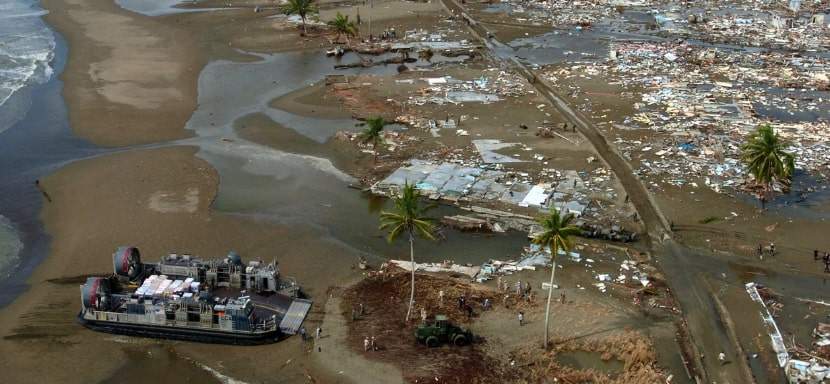
Surviving a tsunami is a terrifying thought, but we should all be aware of it, especially if we live near coastlines. A tsunami can strike with little warning, and the key to making it through alive is to know what to do before, during, and after the waves hit.
Here, we’ll walk through practical steps that could save your life.
Key Points
- Evacuate to Higher Ground Immediately – When a tsunami warning is issued, or you spot natural signs like the sea level dropping, go to the higher ground fast.
- Recognize Natural Warning Signs – If you feel an earthquake, see the ocean pulling back, or hear a roar from the sea, act immediately—don’t wait for an official alert.
- Stay Informed and Be Prepared – Keep an emergency kit ready, have a plan, and ensure you can receive updates through a weather radio or smartphone.
Understanding What a Tsunami Is
A tsunami is a series of large ocean waves caused primarily by underwater earthquakes, but they can also be triggered by volcanic eruptions, underwater landslides, or even a meteorite crash. These waves can travel up to 500 miles per hour (yes, faster than a jet airplane) and grow in size as they approach shallow waters near the coast.
While tsunamis are relatively rare, they can cause catastrophic damage to coastal areas, destroying buildings, infrastructure, and lives in minutes. But here’s the thing—by the time the wave comes, you won’t have much time to think. This is why preparation is critical.
10 Quick Tips on Tsunami Survival
Here are ten quick tips to help you survive a tsunami. These essential actions will improve your chances of staying safe when disaster strikes.
- Evacuate to higher ground immediately: Move at least 100 feet above sea level or as far inland as possible.
- React quickly to an earthquake: If you feel shaking near the coast, head inland or to higher ground without delay.
- Watch for natural warning signs: A sudden sea retreat or a loud ocean roar signals an incoming tsunami.
- Avoid beaches and low-lying areas: After any warning or earthquake, steer clear of the shoreline.
- Prepare an emergency kit: Keep water, food, a first aid kit, and a portable radio ready for evacuation.
- Follow official warnings and alerts: Listen to local authorities and don’t return until they declare it safe.
- Move on foot if roads are congested: If driving isn’t possible, walk or run to higher ground.
- Stay inland after the first wave: Tsunamis can have multiple waves, so wait for the “all clear” before returning.
- Know your evacuation routes in advance: Familiarize yourself with safe paths to higher ground and practice often.
- Keep informed and be prepared: Sign up for local alerts and have a communication plan with family.
The Importance of Being Prepared for a Tsunami
No one ever wakes up and thinks, “Today, I might have to outrun a giant wave.” However, being prepared should be part of your lifestyle if you live near the ocean, especially in areas prone to earthquakes. Even if a tsunami isn’t on your radar today, understanding the risks and having a plan can make all the difference.
Start by checking whether your home, workplace, or school is in a tsunami hazard zone. This information is usually available on local government websites or through tsunami preparedness organizations. If you are in such a zone, take the time to map out evacuation routes. Know where the highest points in your area are and how long it takes to get there. You don’t want to figure this out while a wall of water is charging at you.
Did You Know?
Some tsunamis can travel across entire oceans at speeds comparable to a commercial jet, reaching up to 500 miles per hour. In 1960, a tsunami generated by an earthquake in Chile traveled over 6,000 miles across the Pacific Ocean, destroying Japan more than 15 hours later!
What to Include in Your Emergency Kit
Like any natural disaster, having an emergency kit can save your life after a tsunami. Your kit should include:
- Non-perishable food and bottled water (enough for at least 72 hours)
- A first aid kit with bandages, antiseptics, and necessary medications
- A flashlight and extra batteries
- A portable radio (preferably hand-cranked or battery-powered) to stay updated on emergency information
- A whistle to signal for help
- Waterproof matches and a multi-tool
Remember, you might not have time to grab a lot of stuff if a tsunami hits suddenly, so make sure your emergency kit is easily accessible and ready to go.
Recognizing Tsunami Warning Signs
Tsunamis don’t always come with a loudspeaker warning system. Sometimes, the natural world gives you hints. This is a red flag if you’re near the coast and feel the ground shaking. Earthquakes cause most tsunamis, so if the earth is trembling, the ocean could be next.
Another warning sign is if the sea suddenly recedes far more than usual. Picture it like the tide pulling back, but way more dramatic. The ocean seems to suck away from the shore, exposing parts of the beach that are usually underwater. This is often the ocean’s way of warning you that a massive wave is on its way. If you see this, don’t stand around gawking or taking photos for Instagram. Run—preferably to higher ground.
Finally, if you hear a loud, eerie roar coming from the ocean, it could be the sound of an approaching tsunami wave. This is no time to be curious. Move inland or to a higher elevation immediately.
What to Do During a Tsunami
When a tsunami is imminent, every second counts. You won’t have time to pack or even grab much. You need to move.
Evacuate Immediately
If a tsunami warning has been issued, or if you’ve recognized any natural warning signs, don’t hesitate. Evacuate immediately. Move to higher ground—ideally, at least 100 feet above sea level or as far inland as possible. If you’re in a car, drive away from the coast quickly but calmly. Do not, under any circumstances, stay in a building that is below sea level.
If you cannot evacuate to higher ground, find a sturdy building and get to the highest floor possible. Avoid basements, as they will likely flood quickly. If caught in the water, grab onto something that floats, like a piece of wood or a life raft.
Staying Safe After the Tsunami
Surviving the initial wave is just the first challenge. Tsunamis often come in multiple waves; the first might not be the largest. It’s common for people to think the danger has passed after the first wave and venture back toward the coast—this is a fatal mistake. Wait for local authorities’ official “all clear” before returning to lower ground.
Helping Others and Assessing Damage
Once it’s safe, you may find yourself in a position to help others. People could be injured or trapped under debris, and your first-aid knowledge will be crucial. Make sure you help others only if it’s safe for you.
Water supplies may be contaminated after a tsunami, so avoid drinking tap water unless authorities say it’s safe. Stick to bottled water from your emergency kit until the all-clear is given. Be aware of the risk of aftershocks, which can trigger additional tsunamis or cause further damage to already weakened buildings.
Staying Informed About Tsunami Risks
Being aware of the risks in your area is essential. The Pacific Ocean, for example, is one of the most tsunami-prone regions in the world due to the “Ring of Fire” — a hotspot for seismic activity. But tsunamis can occur anywhere with large bodies of water. Areas like Japan, Alaska, the Pacific Northwest, and even parts of the Mediterranean have all experienced tsunamis in the past.
Stay Connected and Informed
Always have a way to receive emergency alerts, whether it’s a weather radio, a mobile app, or government text messages. You might also want to sign up for local tsunami warnings and evacuation alerts. These warnings can give you precious minutes or even hours to evacuate safely.
FAQs
What is the safest place to be during a tsunami?
The safest place is at least 100 feet above sea level or as far inland as possible. Higher ground is always safer.
How much time do you have to escape a tsunami?
It depends on where the tsunami originates. After a local earthquake, you may only have minutes to evacuate. In other cases, you could have several hours. Permanently evacuate as soon as you receive a warning.
Can animals sense a tsunami?
There is anecdotal evidence that some animals may detect changes in the environment before a tsunami, but this is not reliable for human evacuation plans.
What should you do if you’re at the beach and feel an earthquake?
Immediately move inland or to higher ground. Even if the earthquake feels minor, it could trigger a tsunami.
How far inland can a tsunami travel?
This depends on the size of the tsunami and the geography of the land. Some tsunamis have been known to travel several miles inland.
Can you survive a tsunami if you can’t evacuate?
If you cannot evacuate, try to find a sturdy structure and get to the highest possible floor. If caught in the water, holding onto something that floats may increase your chances of survival.
Conclusion: How to Survive a Tsunami
Surviving a tsunami requires quick thinking, preparation, and recognizing danger before it strikes. While facing a tsunami is scary, knowing the steps to take can help you act confidently in the moment. Remember, the three most important actions are to evacuate immediately to higher ground, recognize natural warning signs, and stay informed.
Preparation is vital, so start planning now—you’ll be grateful you did if the day ever comes.
Largest Recorded Tsunamis in History
Here’s a chronological list of the largest tsunamis in recorded history, showcasing these natural disasters’ incredible size and power.
Lituya Bay, Alaska (1958): The largest tsunami wave ever recorded reached an astonishing height of 1,720 feet, triggered by a massive rockslide into the bay after an earthquake.
Valdivia Earthquake, Chile (1960): This 9.5-magnitude earthquake, the strongest ever recorded, caused tsunamis that affected coastal regions across the Pacific Ocean, with waves as high as 82 feet.
Indian Ocean Tsunami (2004): A 9.1 earthquake off the coast of Sumatra produced waves over 100 feet high, devastating coastlines and killing over 230,000 people across 14 countries.
Tohoku Tsunami, Japan (2011): Following a 9.0 earthquake, tsunami waves as high as 133 feet struck Japan’s northeastern coast, leading to over 15,000 deaths and the Fukushima nuclear disaster.
Sulawesi Tsunami, Indonesia (2018): Triggered by a 7.5-magnitude earthquake, this tsunami struck Palu with waves up to 20 feet high, killing more than 4,300 people.
More Nature’s Wrath Scenarios
How to Survive a Wildfire
Wildfires are one of nature’s most unpredictable and destructive forces, and they can engulf entire…
How to Survive a Landslide
Landslides are one of nature’s sudden, unexpected acts, like finding a $20 bill in an old jacket, but far…
How to Survive a Hurricane
Hurricanes are nature’s way of reminding us who’s in charge—think of it as the weather throwing a…
How to Survive a Lightning Strike
Thunderstorms are a mesmerizing display of nature’s power, but they also bring the terrifying threat…
How to Survive a Tornado
Tornadoes are among the most unpredictable and destructive natural phenomena. Their sudden…
Recent Survival Posts
How to Survive a Layoff
Layoffs feel personal—even when they’re not. One day, you’re responding to Slack messages and forwarding…
How to Survive a Drug Test
I never imagined I’d be so emotionally invested in a paper cup. But there I was, standing under the fluorescent…
How to Survive an Interrogation
If you’ve ever been caught in the crosshairs of an overly enthusiastic mall cop or stared down by someone…
How to Survive a Nightclub Shooting
Nightclubs pulse with life—lights flashing, music pounding, bodies packed tight on the dance floor. It’s a place to…
How to Survive a Bachelor Party
A bachelor party is a delicate mix of celebration, chaos, and questionable decision-making, wrapped…
More Nature’s Wrath Survival Scenarios
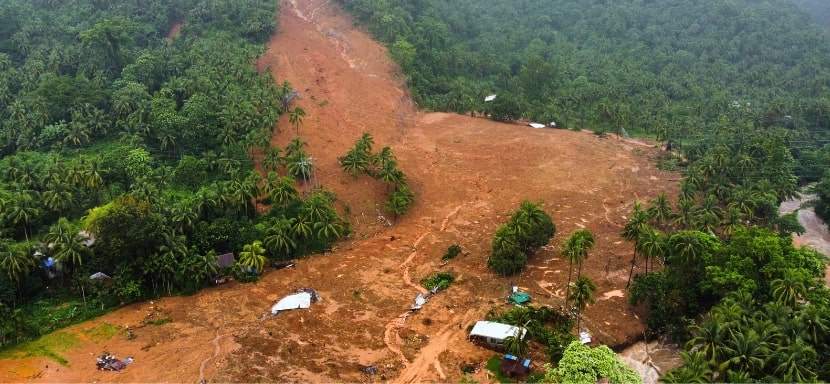
How to Survive a Landslide
Landslides are one of nature's sudden, unexpected acts, like finding a $20 bill in an old jacket—only there's no thrill of discovery, just destruction. They strike without much warning, sweeping away everything in their path—homes, roads, vehicles, and, tragically,...
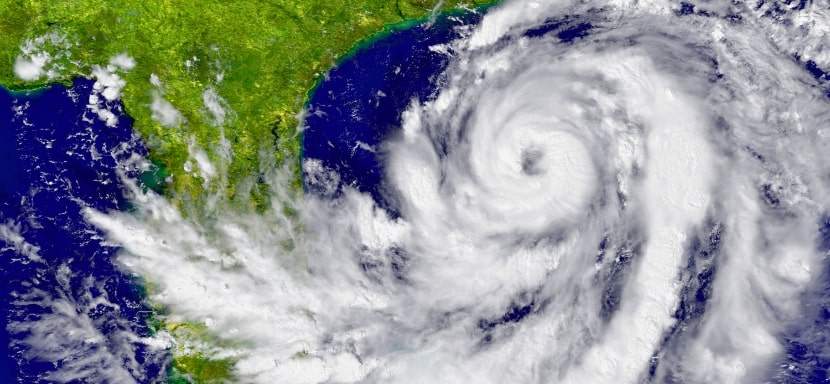
How to Survive a Hurricane
Hurricanes are nature's way of reminding us who's in charge—think of it as the weather throwing a tantrum. The winds howl, the rain pours, and trees bend until they snap. But while hurricanes are frightening, surviving them is possible with good preparation, clear...
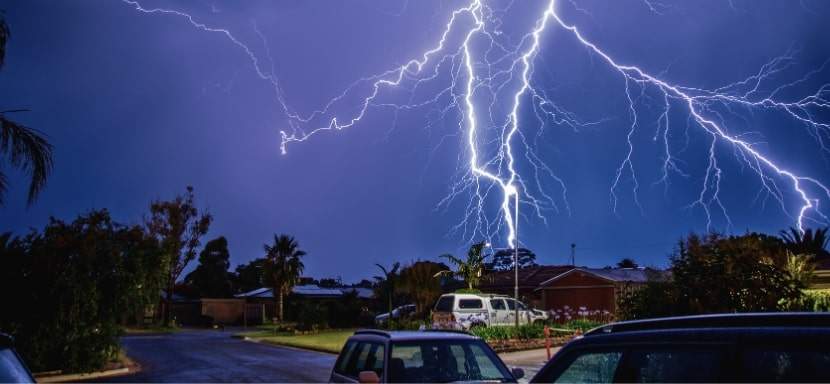
How to Survive a Lightning Strike
Thunderstorms are a mesmerizing display of nature's power, but they also bring the terrifying threat of lightning strikes. Each year, thousands of people worldwide are affected by lightning, with severe injuries and even fatalities resulting from these sudden...
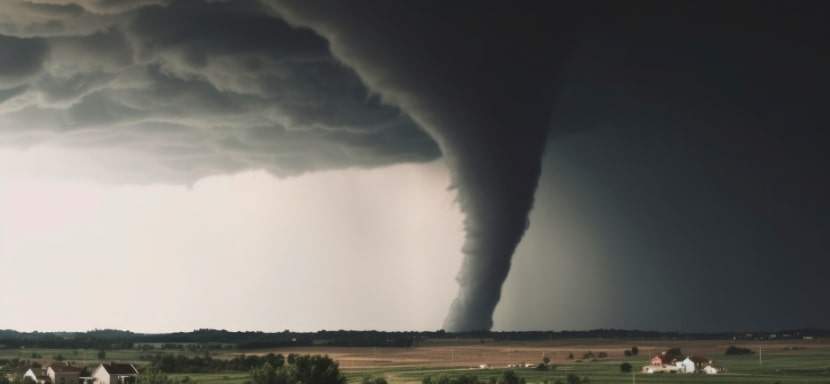
How to Survive a Tornado
Tornado Safety: How to Survive and Protect Your Family Learn life-saving strategies to protect yourself and your loved ones from the unpredictable fury of tornadoes. Tornadoes are among the most unpredictable and destructive natural phenomena. Their sudden and violent...

How to Survive a Heat Wave
How to Beat the Heat: Essential Strategies for Surviving a Heat Wave Heat waves are the deadliest weather-related disaster in the United States, causing more annual fatalities than hurricanes, tornadoes, and floods. Heat waves can be overwhelming, making us feel like...
More Survival Scenarios

How to Survive a Layoff
When the Floor Falls Out: The Reality of a Layoff Layoffs feel personal—even when they're not. One day, you're responding to Slack messages and forwarding emails. Next, you're staring at your monitor as it logs you out... for good. Whether it's a restructuring, a...

How to Survive a Drug Test
The Cup, The Room, The Truth I never imagined I’d be so emotionally invested in a paper cup. But there I was, standing under the fluorescent hum of a strip-mall clinic, trying to recall the last time I ate a poppy seed bagel. That’s the thing about drug tests—they...

How to Survive an Interrogation
If you've ever been caught in the crosshairs of an overly enthusiastic mall cop or stared down by someone in a uniform with a clipboard and a glare, you’ve felt it — the chilly fingers of interrogation anxiety. And while most of us imagine interrogation scenes as...

How to Survive a Nightclub Shooting
Nightclubs pulse with life—lights flashing, music pounding, bodies packed tight on the dance floor. It’s a place to escape, feel the rhythm, and lose yourself in the crowd. But that same energy can turn deadly in seconds, transforming a night of fun into one of the...

How to Survive a Bachelor Party
A bachelor party is a delicate mix of celebration, chaos, and questionable decision-making, wrapped in the noble intention of sending the groom off into married life with a night he’ll (hopefully) remember. It’s a ritual as old as time—well, as old as men deciding...

How to Survive Your First Time at the Gym
Walking into a gym for the first time can feel like stepping into an alien world. The machines hum with purpose, the regulars move confidently, and you’re left standing there, clutching your water bottle, wondering whether you’re in the right place—or on the right...

How to Survive a Worldwide Communications Breakdown
Imagine waking up to silence. Your phone doesn’t buzz, your email won’t load, and even your local radio station crackles with static. A worldwide communications breakdown has hit. What next? For many, this doomsday scenario may sound like the opening lines of a...

How to Survive a Flash Flood While Driving
Surviving a flash flood while driving requires quick thinking, calmness, and a solid plan to ensure your safety. Preparation can make all the difference between a close call and a catastrophe in emergencies like this. This guide provides practical advice to protect...

How to Build an Emergency Kit
Emergencies don’t knock politely at the door. They barge in, uninvited, like a distant relative with a penchant for drama, turning your world upside down without warning. Whether it’s a power outage, a natural disaster, or an unexpected evacuation, the key to staying...
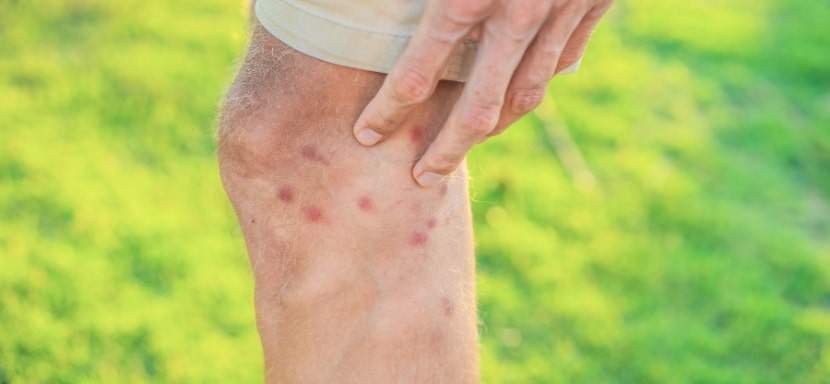
How to Protect Yourself From Insects in the Wild
There’s nothing like being out in the wild—birdsong echoing through the trees, the fresh scent of earth, and a deep sense of peace that makes you think, “Ah, this is what life is about.” But then comes the buzzing. Mosquitoes, ticks, and flies swoop in like uninvited...
